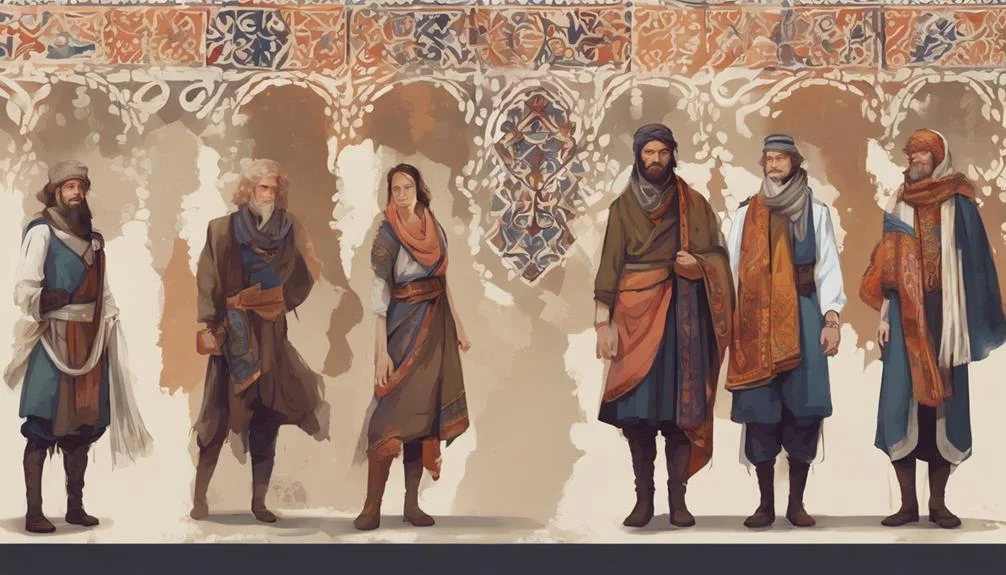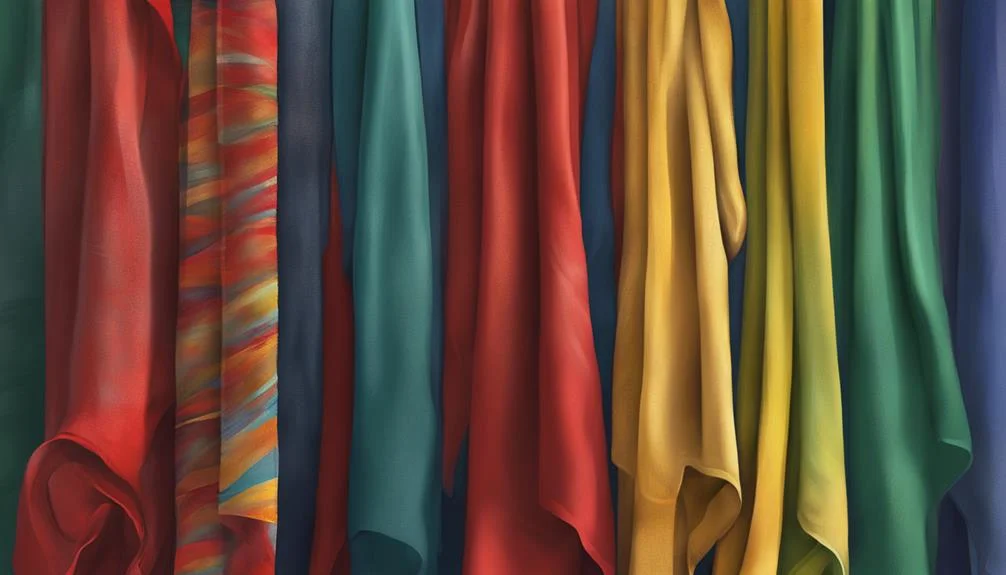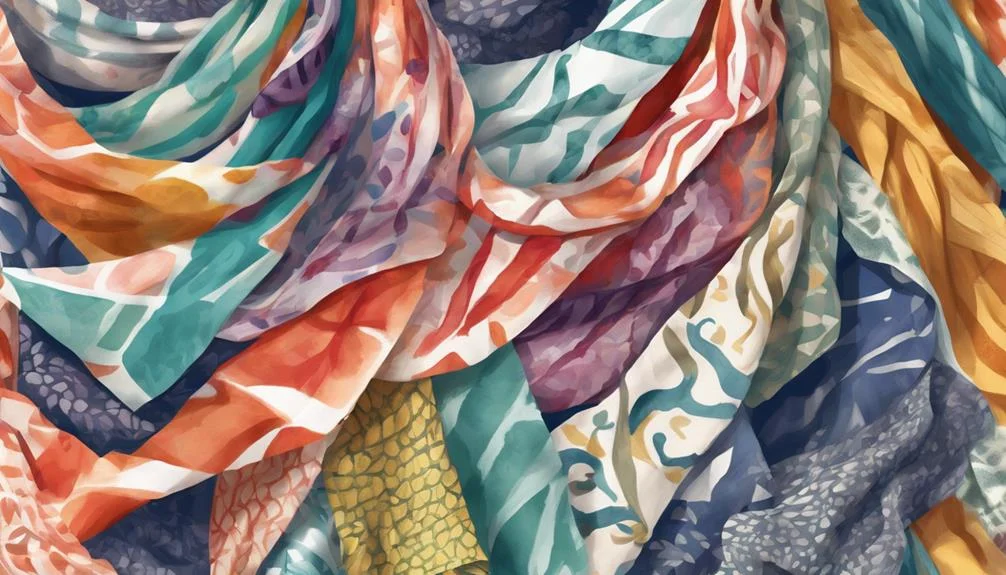Summary
- 1 Historical importance of scarves
- 2 Cultural symbolism around the world
- 3 Scarf colors and their meanings
- 4 Scarf styles and social status
- 5 Personal Expression Through Scarves
- 6 Modern interpretations and trends
- 7 Frequently asked questions
- 7.1 Can men also wear scarves like women?
- 7.2 Are there any superstitions or taboos associated with wearing scarves?
- 7.3 What materials are traditionally used to make scarves?
- 7.4 Do different religions have specific rules regarding the use of scarves?
- 7.5 Are there health benefits to wearing scarves in certain climates?
Discover the deeper meaning behind the scarves as they convey loyalty, culture and personality. Red symbolizes passion, while blue brings calm. Green reflects nature, and black exudes elegance. From historical distinctions to modern expressions, scarves reflect social status and individuality. Silk conveys luxury, while handmade pieces show uniqueness. Embrace scarves as tools of self-expression, mixing tradition with a modern twist. Experiment with knotting styles and fabric choices to create your own personal statement. Each scarf holds a story ready to be told, tying together culture, fashion and personal identity.
Historical importance of scarves

Throughout history, scarves have played a significant role in various cultures and societies, serving as more than just pieces of fabric for warmth. From ancient Egypt to the Roman Empire, scarves were used for practical purposes such as keeping warm or protecting oneself from the sun and dust. In medieval Europe, knights wore scarves as a symbol of loyalty or to distinguish friend from foe on the battlefield.
During the 17th century, Croatian mercenaries wore scarves around their necks, attracting the attention of the French army, leading to the term 'tie' and the birth of modern neckties. Scarves also became a fashionable accessory among European high society in the 18th and 19th centuries, with different knotting styles symbolizing social status or political affiliations.
With the industrial transformation that led to mass production, scarves became accessible to people of all social classes. Today, scarves continue to be a versatile accessory, reflecting personal style, cultural heritage and also serving as a symbol of solidarity or support in various movements and causes.
Cultural symbolism around the world
Around the world, scarves carry a variety of cultural symbolism reflecting the beliefs, traditions and values of different societies. In many Middle Eastern cultures, scarves such as the keffiyeh or shemagh have importance as symbols of protection from the harsh sun and desert sand. The intricate designs and colors of these scarves often represent tribal affiliations or family heritage. In Japan, the obi stole worn with kimonos symbolizes formality and adherence to traditional customs, with different knot styles conveying specific messages about the wearer's status or occasion.
In South America, the alpaca wool scarves are valued not only for their warmth, but also for their connection to indigenous communities and the preservation of ancient weaving techniques. In India, scarves such as the dupatta are rich in cultural symbolism, with different regions displaying unique styles of embroidery and materials that reflect the diversity of the country's heritage. In Africa, scarves are often used to convey social status, spiritual beliefs or even political affiliations, with bright colors and motives that play a significant role in the narrative and in the expression of identity.
Scarf colors and their meanings

Scarf colors carry significant meanings, adding depth to the symbolism of this versatile accessory. The color of a scarf can convey various messages and emotions, making it an essential element in fashion and self-expression.
Red scarves are often associated with passion, love and courage. Wearing a red scarf can symbolize strength and vitality. On the other hand, blue scarves are related to calmness, serenity and intelligence. A person wearing a blue scarf can be perceived as trustworthy and reliable.
Green scarves represent nature, growth and harmony. They can signify balance and renewal. Yellow scarves are connected to happiness, optimism and energy. Wearing a yellow scarf can bring a feeling of joy and positivity to an outfit.
Black scarves are often linked to sophistication, mystery and elegance. They can add a touch of drama to any look. White scarves symbolize purity, innocence and simplicity. Wearing a white scarf can create a feeling of peace and clarity. Choose the color of your scarf wisely to reflect the message you want to convey to the world.
When it comes to styles of scarves, can often serve as indicators of the social status, subtly communicating aspects of a person's identity and position in society. The way a scarf is worn, the material it is made of, and the brand it represents can all play a role in signaling social status. For example, the luxury silk scarves from high fashion designer may be associated with wealth and sophistication, suggesting a higher social status. On the other hand, the handmade or unique scarves might convey individuality and a more eclectic taste, which can also be perceived as a symbol of social status in certain circles.
In addition, the way a scarf is tied or draped can also say a lot about social status. A perfectly stylized scarf with knots or tangled folds may indicate attention to detail and a certain level of elegance, while a casually wrapped scarf might convey a more relaxed or effortless. Ultimately, scarf styles can be subtle but powerful tools for expressing social status and identity in various social contexts.
Personal Expression Through Scarves

Let's delve into how scarves go beyond being mere accessories to become a canvas for personal expression. Your choice of scarf style can reflect your unique taste and personality, making a statement about who you are without saying a word. From bold patterns to delicate fabrics, each scarf you choose is a wearable art form that speaks volumes about your individuality.
Scarf as a style
Express yourself effortlessly through the versatile accessory that is the scarf, adding a touch of personality to your style. Scarves are more than just fabric-they are a statement piece that can enhance any outfit. Whether you prefer a bold pattern, a splash of color, or a luxurious texture, scarves offer endless possibilities to showcase your unique taste and personality.
One of the great things about scarves is their versatility. You can wear them in numerous ways, such as draped elegantly around your neck, tied in a chic knot or even used as a headpiece. This adaptability allows you to experiment with different looks and find what best suits your individual style.
Scarves can also be a practical addition to your wardrobe, providing warmth in the colder months or protecting you from the sun on a hot day. They can effortlessly transition from a casual daytime look to an elegant evening ensemble, making them a must-have accessory for any fashion-loving individual. So go ahead, express yourself through your scarves and let your style shine!
Scarf as identity
Celebrate the power of self-expression by using scarves as a unique and personal way to communicate your identity. Scarves have long been a symbol of individuality, allowing you to show your personality and values through the way you wear them. Here is how you can use scarves to express your identity:
- Color and Pattern: Choose scarves with colors and patterns that resonate with you. Whether bold, vibrant shades or delicate, intricate designs, your choice of scarf can say a lot about your style and preferences.
- Material and Fabric: Opt for different materials and fabrics to communicate different aspects of your identity. Silk can represent elegance and sophistication, while wool can symbolize warmth and comfort. The texture of a scarf can add depth to your overall look.
- Techniques of Style: Experiment with various ways to tie and drape your scarf. From simple knots to elaborate wraps, the style in which you wear your scarf can reflect your creativity and confidence. Explore different techniques to really make your scarf unique.
Scarf as art
Discover the artistic potential of scarves as a means of personal expression and creativity. Scarves are not just functional accessories; they serve as canvases for artistic expression. Through unique designs, colors and patterns, scarves allow you to showcase your individuality and creativity. Whether you prefer bold, abstract prints or delicate floral patterns, there is a scarf out there that perfectly captures your artistic vision.
Consider the following table showing the various ways scarves can be used as an art form:
| Artistic Style | Description | Sample Image |
|---|---|---|
| Abstract Expression | Bold colors and shapes, no clear shape |  |
| Inspired by Nature | Designs inspired by flora and fauna |  |
| Minimalist Design | Clean lines, simple color palette |  |
| Vintage Glamour | Retro motifs and luxurious fabrics |  |
Let your scarf be a reflection of your artistic talent and add a touch of creativity to your daily style.
Modern interpretations and trends
Ready to explore how scarves continue to trend in modern fashion? Discover the symbolism of different scarf styles, the different cultural influences shaping scarf trends today, and get expert advice on how to wear your scarf like a pro. Unlock the secrets of this timeless accessory and enhance your wardrobe with the latest scarf interpretations and styling techniques.
Symbolism in fashion
In contemporary fashion, the symbolic meaning of scarves has evolved to reflect personal style and cultural influences, making them a versatile accessory that goes beyond mere functionality. Regarding symbolism in fashion, scarves have taken on new meanings that resonate with individuals on a deeper level:
- Expression of individuality: Scarves are now seen as a canvas for self-expression, allowing you to show your unique personality and style through different colors, patterns and fabrics.
- Empowerment: In modern fashion, scarves have become a symbol of empowerment, particularly when worn boldly or as statement pieces, allowing you to make a strong fashion statement.
- Cultural fusion: Scarves have also become a tool for cultural fusion, where mixing traditional styles of scarves from different cultures creates a beautiful mix of heritage and contemporary fashion trends.
Embracing these modern interpretations and trends, scarves have become more than just an accessory: they are now a powerful symbol of personal expression and cultural unity in the fashion world.
Cultural influences today
How do cultural influences affect the modern interpretations and trends surrounding scarves in today's fashion landscape? Scarves have evolved beyond their practical purposes to become significant cultural symbols in the fashion world. In today's society, scarves represent more than warmth; they are statements of style, identity, and heritage. We investigate how different cultures influence modern interpretations and trends of scarves:
| Cultural Influence | Modern Interpretation |
|---|---|
| French | Silk scarves tied elegantly around the neck are symbols of sophistication and Parisian chic. |
| Indiana | Brightly colored and intricately patterned scarves are popular for adding a touch of exoticism to outfits. |
| Scandinavian | Chunky knit scarves in neutral tones reflect the minimalist and cozy Nordic fashion aesthetic. |
These cultural influences continue to inspire contemporary scarf designs and styling techniques, showing the rich tapestry of traditions woven into the fabric of modern fashion.
Scarf styling tips
To elevate your style with scarves with modern interpretations and trends, consider experimenting with different knotting techniques and layering options.
- Knotting Techniques: Try the 'French Knot' for a chic look, the 'Infinity Ring' for an elegant touch, or the 'Braided Knot' for a fun and intricate touch.
- Layering Options: Layer a silk scarf over a basic top for a touch of elegance, drape a scarf over a leather jacket for a fashionable look, or wrap a scarf around a ponytail for a stylish hair accessory.
- Fabric Mix: Pair a chunky knit scarf with a stylish leather jacket for a contrasting yet cozy look, combine a patterned scarf with a solid-color outfit for a pop of color, or pair silk scarves with denim for a playful, modern look.
Frequently asked questions
Can men also wear scarves like women?
Yes, the scarves can certainly be worn by both men which by women! They are versatile accessories that can add style and functionality to any outfit. Men often wear scarves in a more utilitarian way to keep warm, while women can use them to make a fashion statement. With a variety of fabrics, colors and styles available, scarves are a great way for anyone to express their personal sense of style.
Are there any superstitions or taboos associated with wearing scarves?
As for superstitions or taboos related to wearing scarves, it really depends on the culture or tradition. Some societies might have beliefs about certain colors or patterns that bring good luck or bad omens. For example, in some cultures, wearing a scarf in the home might be considered disrespectful. It is always interesting to learn about these traditions and customs, isn't it?
What materials are traditionally used to make scarves?
As for scarves, traditional materials vary widely. Wool, silk, cotton and cashmere are commonly used to make scarves. Wool scarves are warm and perfect for winter, while silk scarves are luxurious and lightweight. Cotton scarves are breathable and versatile, ideal for all seasons. Cashmere scarves are known for softness and warmth, making them a luxurious choice. Each material offers unique qualities to suit different styles and needs.
Do different religions have specific rules regarding the use of scarves?
Different religions have specific rules regarding the wearing of scarves. For example, in Islam, women wear scarf called hijab as a symbol of modesty and privacy. In Sikhism, the turban is worn as a sign of respect and equality. Even the Christianity has traditions in which scarves are worn by the clerics for ceremonial purposes. These rules vary among different faiths, each attributing unique meanings to the act of wearing a scarf.
Are there health benefits to wearing scarves in certain climates?
Wearing scarves in certain climates can have health benefits. In colder weather, scarves can help keep you warm by protecting your neck and chest from cold winds. They can also prevent heat loss from these areas, which is essential for staying comfortable and avoiding illnesses such as the common cold. In addition, scarves can act as a barrier against allergens and pollutants in the air, reducing your exposure and potential respiratory problems. Stay cozy and healthy with a stylish scarf!
